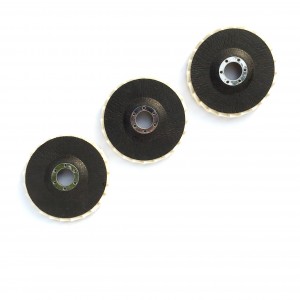Wool felt wheels are a powerful and versatile tool in the world of polishing, but mastering their use can take some time and knowledge. To help both professionals and enthusiasts get the most out of their wool felt wheels, industry experts have shared their valuable tips and tricks.
One of the fundamental aspects of using wool felt wheels effectively is understanding the type of wheel suitable for the task at hand. Different wool felt wheels have varying densities, hardness levels, and fiber compositions, each designed for specific materials and polishing purposes. For example, a soft wool felt wheel is ideal for delicate surfaces like glass or soft metals, as it provides a gentle polishing action that minimizes the risk of scratching. On the other hand, a hard wool felt wheel is better suited for heavy – duty tasks on tough metals, where more aggressive material removal is required. Experts recommend carefully reading the product specifications and consulting with suppliers to select the right wheel for each project.
Proper attachment of the wool felt wheel to the power tool is crucial for both safety and performance. When using a wool felt wheel with a shank on a drill or rotary tool, ensure that the shank is securely tightened into the tool’s chuck. For self – adhesive wool felt wheels used on angle grinders or polishing machines, make sure the adhesive surface is clean and dry before application to ensure a strong bond. A loose or poorly attached wheel can not only affect the quality of the polish but also pose a significant safety hazard.
Another important tip is to use the right polishing compound with the wool felt wheel. The choice of compound depends on the material being polished and the desired finish. For metal polishing, compounds containing abrasives like aluminum oxide or silicon carbide can be used to remove scratches and blemishes. For achieving a high – gloss finish, finer polishing compounds are recommended. Experts advise applying the compound evenly to the surface of the wool felt wheel or the material being polished in a thin layer. Overloading the wheel with too much compound can lead to uneven polishing and waste of the product.
When operating the power tool with a wool felt wheel, it’s essential to maintain a consistent speed and pressure. Starting at a low speed and gradually increasing it as needed allows for better control and reduces the risk of overheating or damaging the surface. Applying too much pressure can cause the wool felt wheel to wear out quickly and may also result in uneven polishing. Instead, let the wheel and the polishing compound do the work, using a light to moderate pressure and moving the tool in a smooth, even motion across the surface.
Regular maintenance of the wool felt wheel is also key to its longevity and performance. After each use, clean the wheel thoroughly to remove any polishing compound and debris. This can be done by gently brushing the wheel with a soft brush or using compressed air to blow out the particles. For more stubborn residues, a mild detergent solution can be used, followed by thorough rinsing and drying. Storing the wool felt wheel in a dry, dust – free environment when not in use helps prevent damage and keeps it in good condition for future projects.
By following these expert tips and tricks, users can unlock the full potential of their wool felt wheels, achieving professional – quality polishing results while ensuring the safety and longevity of the tool. Whether it’s for industrial applications or personal DIY projects, these insights are sure to enhance the polishing experience.

Post time: Jun-13-2025
